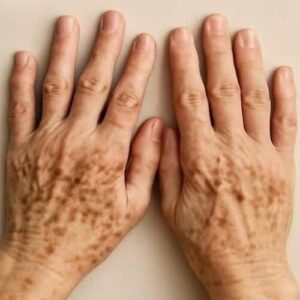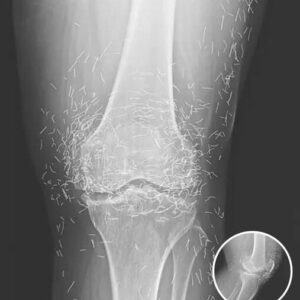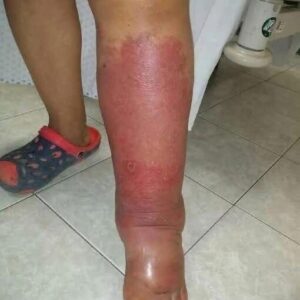**Longitudinal Nail Lines After 40: A Possible Indicator of Underlying Health Conditions**
In recent health discussions and wellness updates, a particular concern has garnered increased attention— the appearance of specific lines on the nails of individuals over the age of 40. These lines, often subtle and easily overlooked, can serve as important signs indicating underlying health issues that warrant further investigation. Medical experts emphasize that these markings, if observed, should not be dismissed as mere aging, but as potential clinical clues requiring consultative assessment.
**Understanding the Lines: What Are They?**
The lines commonly referred to are known as “longitudinal striations” or “longitudinal nail ridges.” They appear as vertical lines running from the cuticle to the tip of the nail, often becoming more prominent with age. While some degree of nail ridging can be part of normal aging, the development of pronounced, persistent, or new lines after the age of 40 should raise awareness among individuals and healthcare providers alike.
**Significance of these Lines: More Than Just Cosmetic**
The presence of these lines can be linked to various internal health issues, ranging from nutritional deficiencies to systemic diseases. Specifically, they may serve as outward signs of:
– **Nutritional Deficiencies:** Deficiencies in vitamins such as B12, Vitamin D, or minerals like zinc and iron can manifest as nail abnormalities, including longitudinal lines. Such deficiencies can compromise overall health and immune function.
– **Thyroid Disorders:** Both hypothyroidism and hyperthyroidism have been associated with changes in nail texture and appearance, including vertical ridges or lines. These conditions influence metabolism and can affect skin and nail health.
– **Aging and Skin Changes:** Natural aging processes might produce less significant nail ridging. However, abrupt or more prominent lines should not be overlooked as they may indicate other health issues.
– **Systemic Conditions:** Diseases such as psoriasis, eczema, or even more severe systemic illnesses can present with nail changes, including longitudinal lines, pitting, or discoloration. Regular observation can assist in early detection and management.
– **Nail Trauma or Local Factors:** Repeated trauma or exposure to harsh chemicals can cause physical changes in the nails, including ridging. However, persistent lines that develop independently of physical injury should be evaluated medically.
**Why Are These Lines More Notable After 40?**
As individuals age, natural biological changes affect the growth and regeneration of tissues, potentially leading to the appearance of linear ridges. Yet, it’s crucial for those over 40 to recognize that significant or new development of these lines may indicate age-related susceptibility to certain health conditions or deficiencies that require medical attention.
**What Should You Do If You Notice These Lines?**
Healthcare professionals recommend that individuals observing new or worsening longitudinal lines on their nails after age 40 consult a healthcare provider. A thorough clinical evaluation may include:
– Blood tests to assess nutritional status, thyroid function, and systemic health markers.
– Examination for signs of underlying dermatological or systemic conditions.
– Review of overall health, including diet, lifestyle, and medication use.
Early identification of potential causes allows for targeted treatment strategies, potentially improving overall health outcomes.
**Preventative Tips and Management**
While some degree of nail ridging is benign and natural, maintaining a balanced diet rich in essential vitamins and minerals can support healthy nail growth. Managing existing health conditions, such as thyroid disorders or nutritional deficiencies, under medical supervision can significantly reduce or reverse these nail changes. Proper nail care and avoiding unnecessary trauma can also prevent exacerbation of ridging.
**In Summary**
The appearance of vertical lines or ridges on the nails in individuals over 40 is a visual cue that should prompt further medical evaluation. While they can be benign and related to aging, persistent or new lines may reveal deeper health issues that need to be addressed. Awareness and timely consultation with healthcare professionals can lead to early diagnosis and effective management of underlying conditions, ultimately supporting better health and wellbeing.
**Check the 1st comment for additional insights or expert opinions on this topic.**
STAY TUNED !





